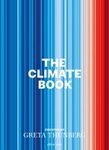By: JN Rayner
280 pages, 59 figures, 14 tables, 40 line drawings, 20 b/w photos
![Dynamic Climatology Dynamic Climatology]()
Click to have a closer look
About this book
Contents
Customer reviews
Biography
Related titles
About this book
This book is an introduction to the concepts behind the popular understanding of climate and global warming. The author provides readers with a survey and reference to the subject to be used before, during and after they delve into the details of statistics, dynamics and thermodynamics. Dynamic Climatology reviews the basic concepts in the study of dynamic climatology, their expression in the form of equations and the physics of models used to reproduce the weather phenomena of a specific location. It takes a historical approach concentrating on the development of ideas during the last four hundred years. Unlike most books in this field, which are devoted to a single aspect of dynamic climatology, the intent of this volume is to present a coherent narrative of the different components of climate thus providing a solid basis of understanding.
Contents
List of Figures. List of Tables. Preface. Part I: The Field of Dynamic Climatology: Part II: Mathematics: 1. Geometry. 2. Differential Calculus. 3. Partial Derivatives. 4. Integral Calculus. 5. Development of Calculus. 6. Vectors. 7. The Exponential and Complex Numbers. 8. Finite Differences. 9. Comment. Part III: Statistics: 10. Data. 11. One Variable Descriptive Statistics. 12. Two Variables. 13. Dependence. 14. Dependence for More Than One Variable. 15. Comment. Part IV: Mechanics: 16. Newton's Definitions and Laws. 17. Base Units. 18. Derived Units. 19. Discussion. Part V: Thermodynamics: 20. Definitions. 21. The Equation of State - The Macroscopic Approach. 22. Atmospheric Composition. 23. Heat. 24. The First Law of Thermodynamics. 25. The Carnot Cycle. 26. Dry Adiabats and Potential Temperature. 27. The Second Law of Thermodynamics. 28. Water. 29. Discussion. Part VI: Radiation: 30. Early Work. 31. Quanta. 32. Definitions of Laws of Radiation. 33. Applications to the Earth. 34. Comment. Part VII: Atmospheric Equations: 35. The Nature of Fluids. 36. Continuity - Conservation of Mass. 37. Molecular Viscosity. 38. The Stress Tenor. 39. Navier-Stokes Equations. 40. Turbulent Eddy Viscosity. 41. The Vector Equation of Motion. 42. General Coordinates. 43. Some Simple Solutions. 44. Fluid Rotation. 45. The Equation Set. 46. Comment. Part VIII: Observed Angular Momentum and Energy: 47. Perspective. 48. Angular Momentum. 49. The Partition of Energy. 50. The Lorenz Model of Energy Flow. 51. Heat Budget. 52. Water Budget. 53. Conversion between Scales of Motion. 54. The General Circulation. Part IX: Towards an Explanation of Climate: 55. The Problem. 56. Numerical Modeling. 57. Climate Modeling. Part X: Concluding Remarks: 58. Power Notation. 59. Constants. 60. Conversions. 61. World Data. Index.
Customer Reviews
Biography
John N. Rayner has served at The Ohio State University as chair of one of the top ranked departments of geography in the USA for twenty years and as director of atmospheric sciences for ten years. In those positions he has concentrated upon the development of curricula that guide students towards success in their respective fields. As a teacher and researcher for forty years he has published in the areas of temporal and spatial analysis, of atmospheric modeling, and of spatial cognition. His book, An Introduction to Spectral Analysis, is unique in geography.
By: JN Rayner
280 pages, 59 figures, 14 tables, 40 line drawings, 20 b/w photos
One of the best textbooks I have read... In not trying to do too much it achieves everything. Times Higher Education Supplement




































